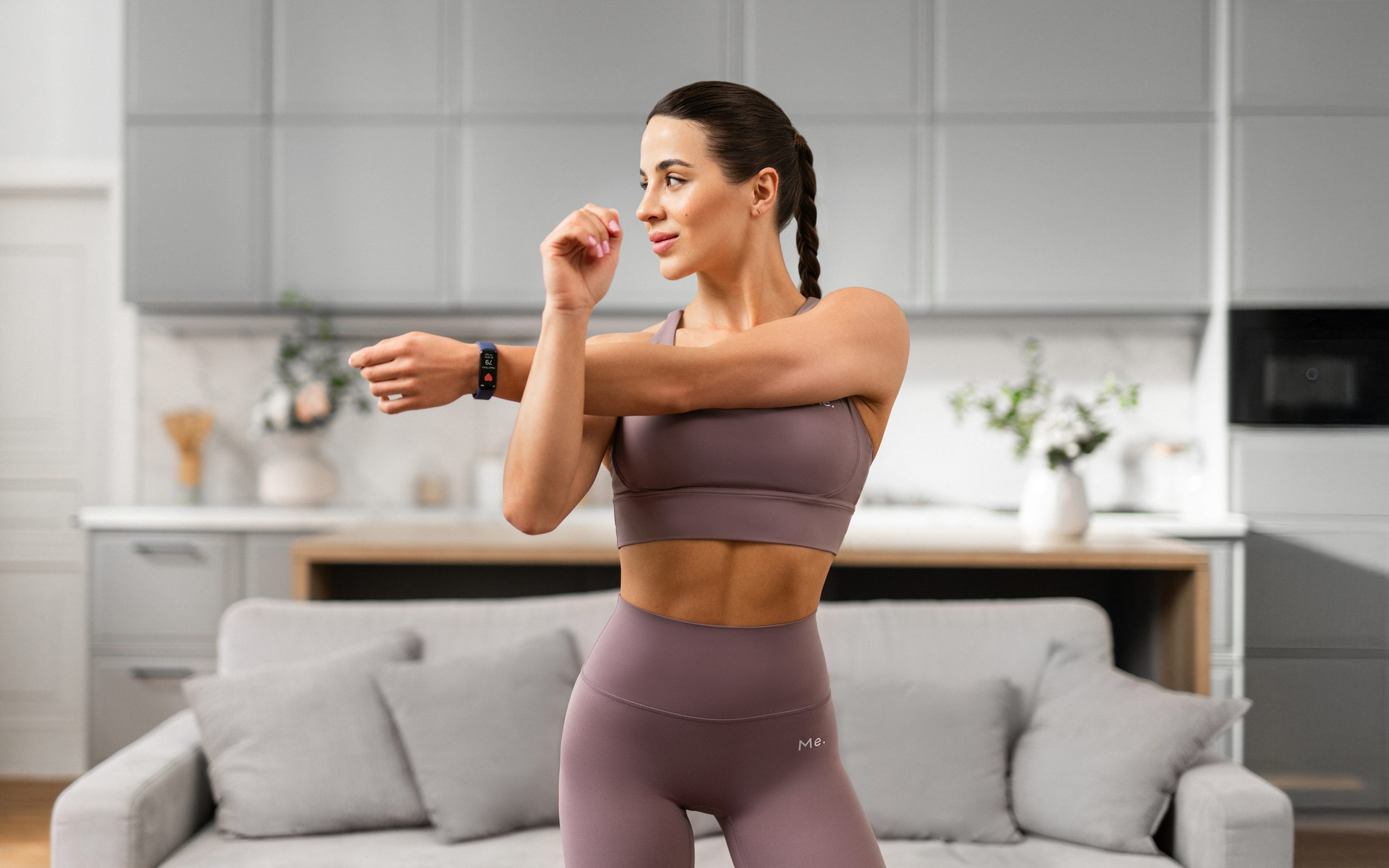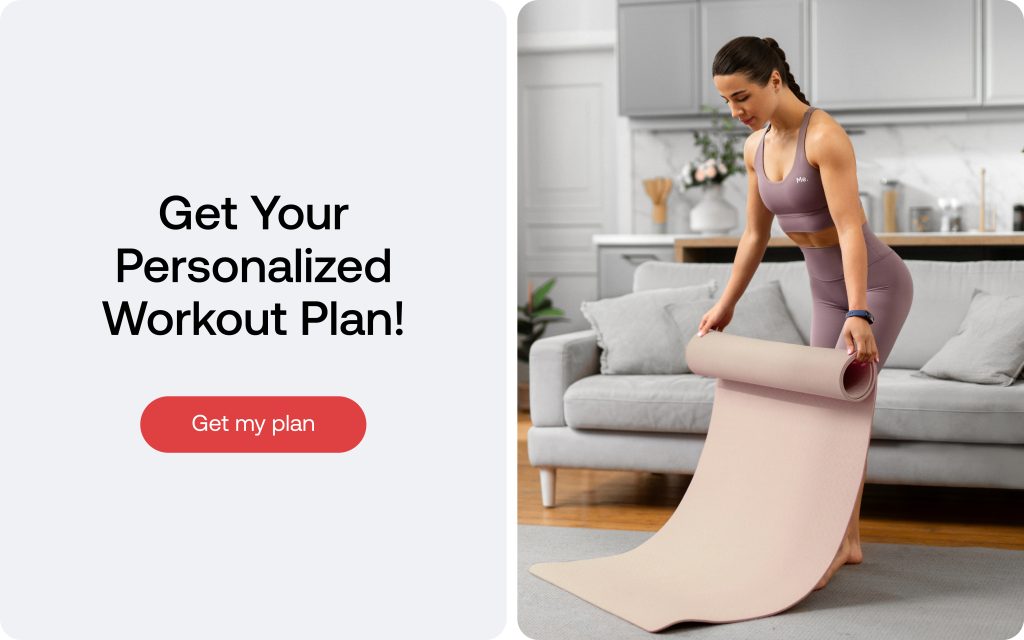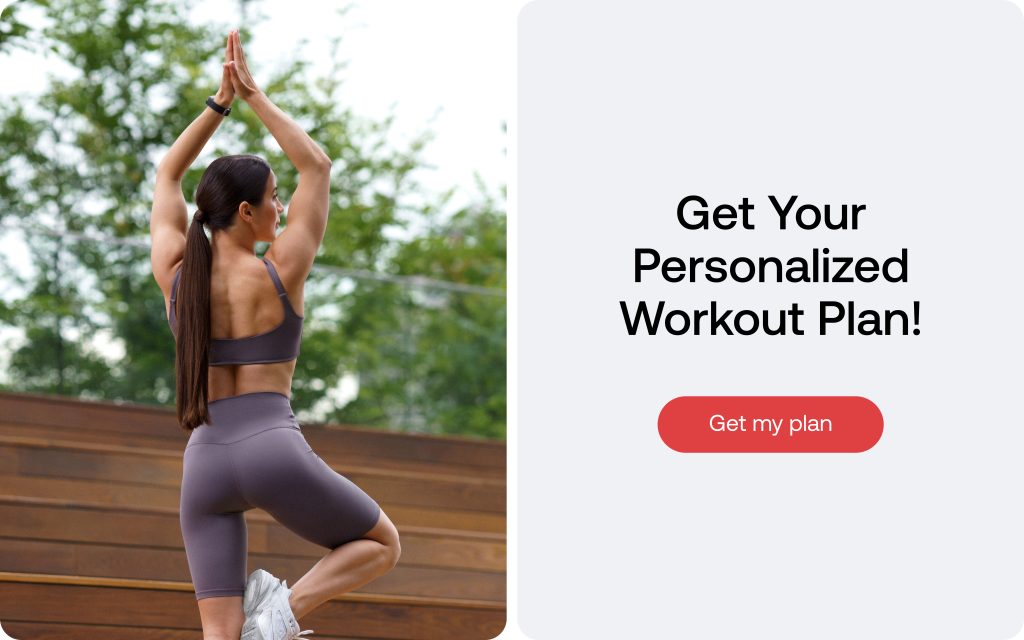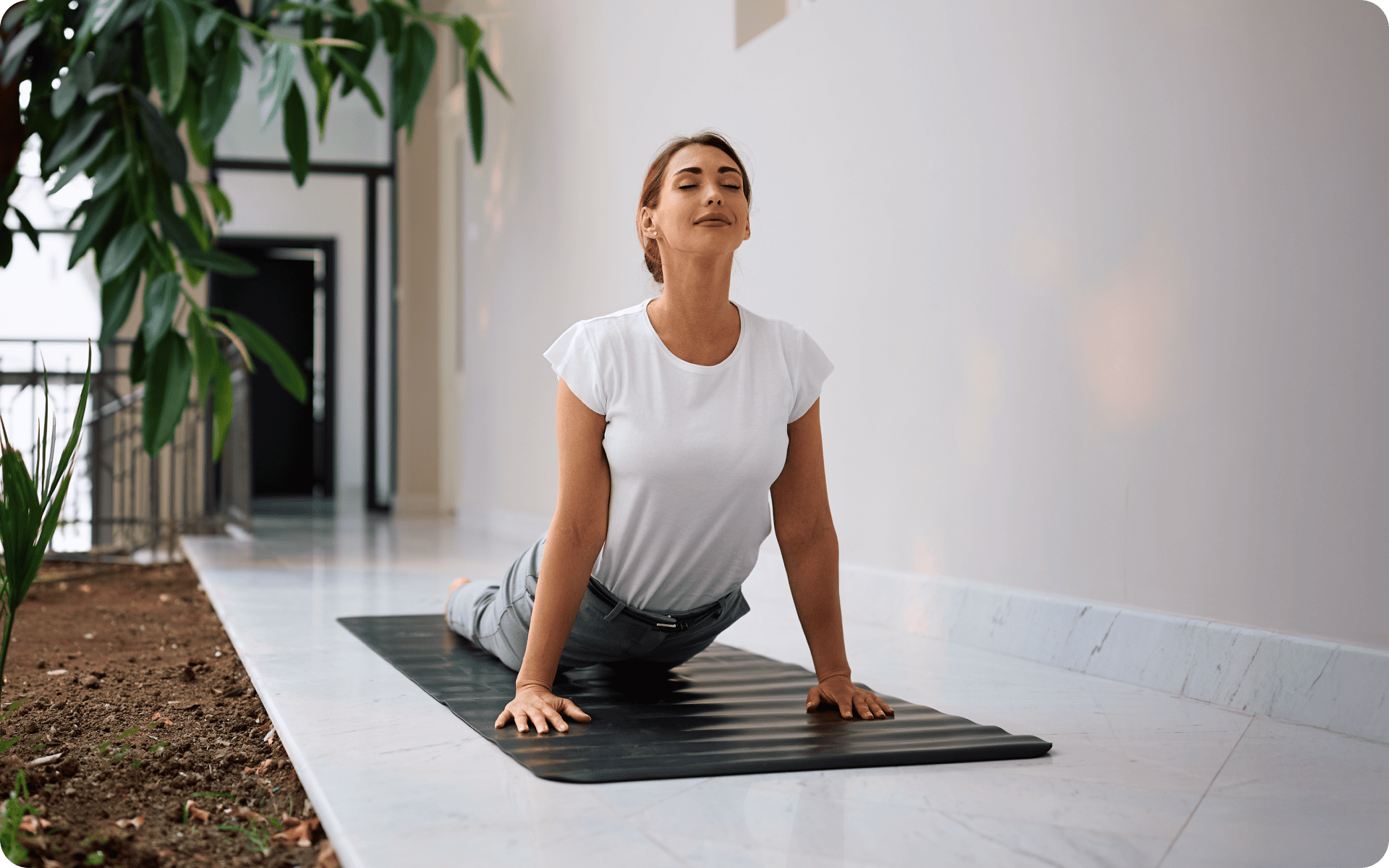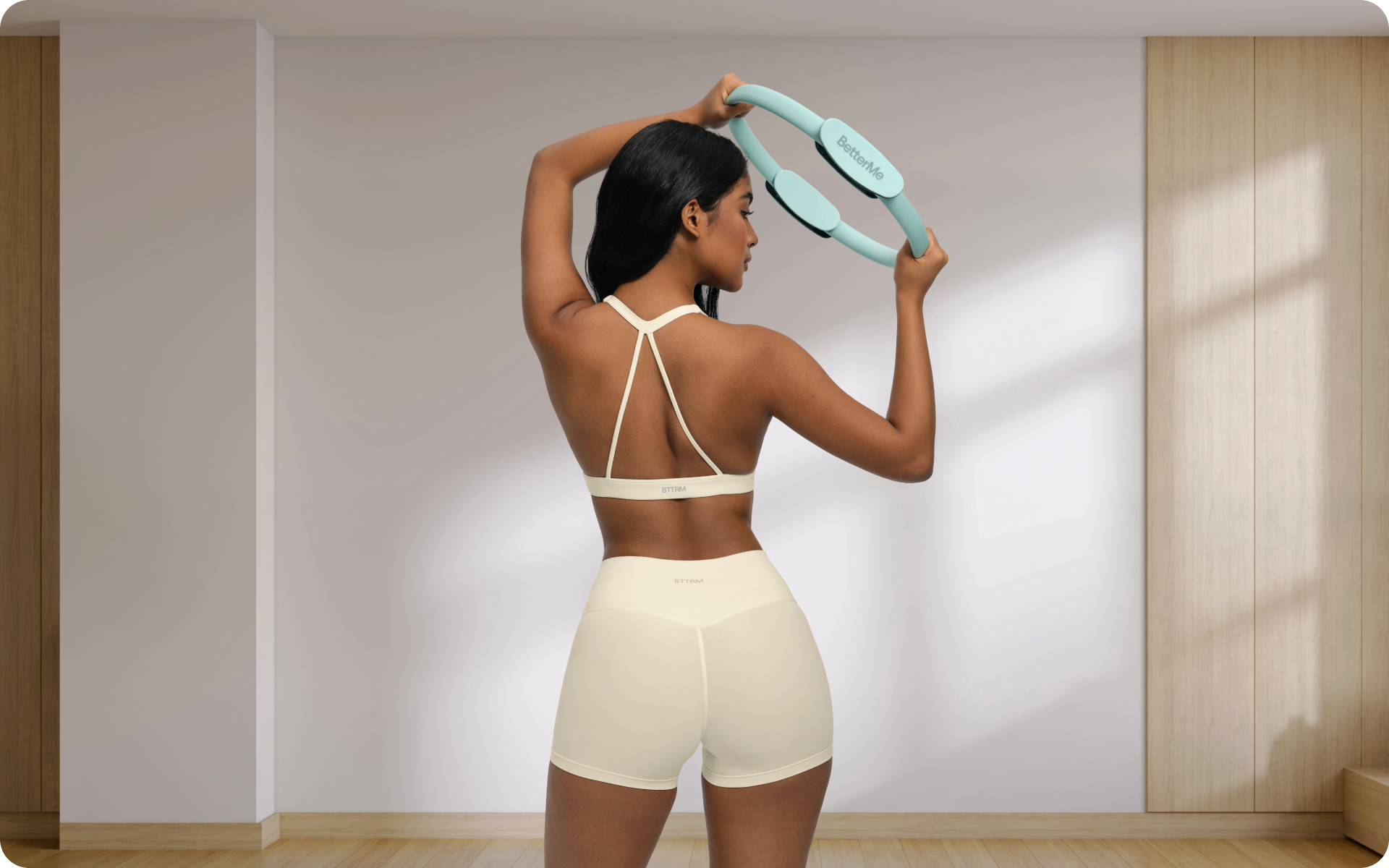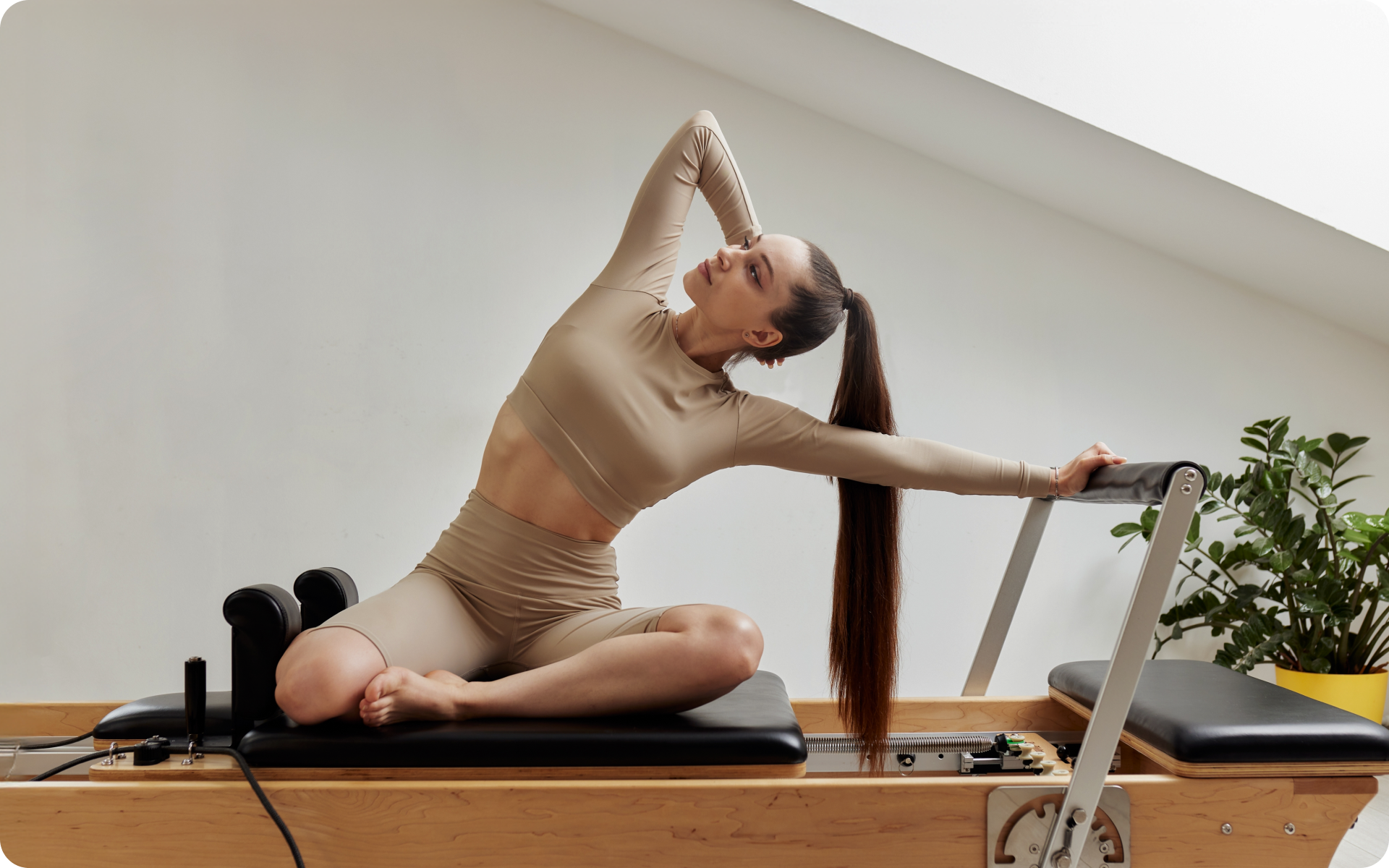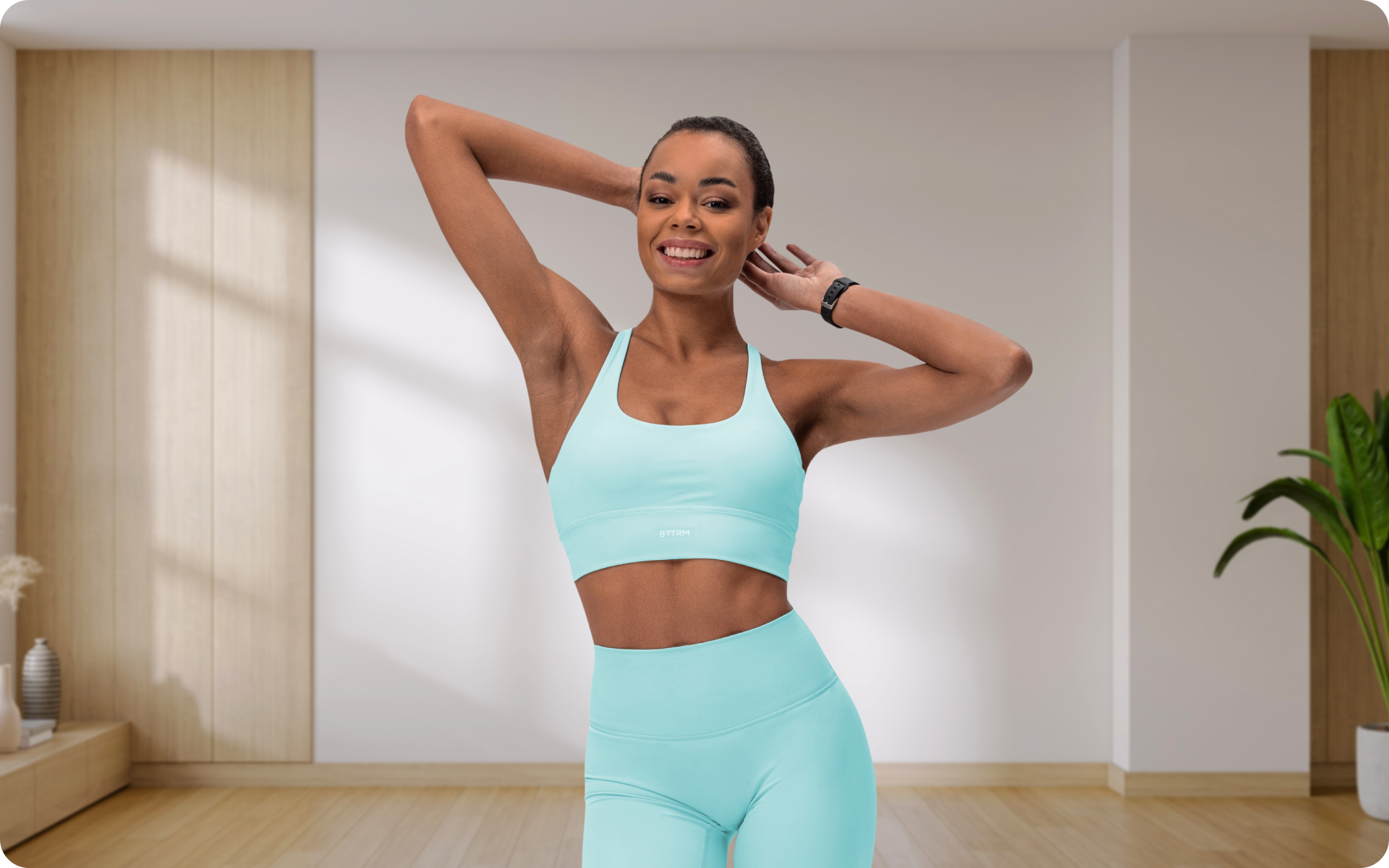Back pain is incredibly common, so it’s not surprising that most of us experience this pain at some point in our lives. There are numerous potential causes of acute and prolonged lower-back pain, some of which include prolonged postures, sedentary lifestyle, obesity, stress, inflammatory conditions, intervertebral disc pathology, nerve root compression, degenerative conditions, muscle strain, and ligament injury. For some, the pain goes away after a short while or after resting. However, for others, the pain is persistent and results in long-term pain. To help relieve back pain and tension, some people have found positive results with Pilates. This form of exercise includes approachable movement patterns that have been found effective for the management of back pain.
If you’re experiencing back pain, it’s important to consult your doctor first to confirm that any exercises you plan to try are safe and appropriate for your specific needs and condition.
This article features some of the Pilates movements that may help ease back pain. We’ll discuss each of these exercises and give a step-by-step guide on how to perform them for reduced back pain. Let’s get started!
What Is Pilates and Why Should You Do It?
Pilates is a method of low-impact exercise that is designed to enhance flexibility, muscular strength, and endurance. These exercises emphasize proper postural alignment, muscle balance, and core strength. Originating from the work of Joseph Pilates, this fitness system has gained global recognition due to its numerous health benefits.
Whether you’re a workout beast or just a beginner making your first foray into the world of fitness and dieting – BetterMe has a lot to offer to both newbies and experts! Install the app and experience the versatility first-hand!
Engaging in Pilates regularly can lead to the following advantages (6):
- Improved Core Strength and Stability: As mentioned above, these exercises focus on muscle balance and core strength. Performing them regularly can help improve your core stability and strength.
- Improved Flexibility: Performing these exercises regularly can also help prevent muscle tightness and stiffness, which helps improve flexibility.
- Improved Balance and Posture: All Pilates exercises call for proper postural alignment. Maintaining the correct posture can help improve your overall posture and balance.
- Prevention and Treatment of Back Pain: The Mayo Clinic reveals that doing Pilates exercises can also prevent and treat back pain if done correctly (6).
- It Complements Other Exercises: According to Medicinenet, Pilates can also be done as a complement to other exercises such as resistance training (5).
Read more: Is 10 Minutes Of Pilates A Day Enough?
Which Is Better for Treating Back Pain: Yoga or Pilates?
The debate over whether yoga or Pilates is better for back pain is ongoing. Research has highlighted that both disciplines can effectively reduce and manage back pain. Each offers distinct benefits and contributes to overall fitness.
Ultimately, the choice is dependent on personal preferences. Yoga provides additional relaxation and mindfulness benefits, while Pilates emphasizes core strength and stability. Both can be valuable components of a pain management or fitness routine.
Pilates Exercises for Lower-Back Pain
The following Pilates exercises are recommended for individuals who are experiencing lower-back pain. When performed correctly, they can alleviate discomfort and tension. It’s essential to master proper techniques and consult a healthcare provider before incorporating these exercises into your routine:
Knee-to-Chest Stretch
This stretch elongates the lower back, which may help relieve pain and tension:
- Lie flat on your back with your knees bent and your feet on the ground.
- Using both hands, pull one knee toward your chest while keeping your head and back on the floor.
- Hold for five seconds, engaging your core and keeping your spine aligned.
- Release and repeat on the other leg.
Lower Back Rotational Stretch
This stretch targets the lower back and trunk muscles:
- Lie on your back with your knees bent and your feet on the floor.
- Extend your arms to the sides for stability.
- Slowly rotate your knees to one side while keeping your shoulders on the floor.
Pause for 5-10 seconds and return to the center. Repeat on the other side.
BetterMe: Health Coaching app helps you achieve your body goals with ease and efficiency by helping to choose proper meal plans and effective workouts. Start using our app and you will see good results in a short time.
Child’s Pose
This pose lengthens back muscles and alleviates stiffness:
- Start on all fours with your hands under your shoulders and your knees slightly apart.
- Sit back on your heels while stretching your arms forward.
- Rest your forehead on the ground and lengthen your spine gently.
Hold for 20 seconds and return to the starting position.
Cat-Cow Stretch
This exercise alternates between spinal flexion and extension:
- Start on all fours with a neutral spine.
- Inhale as you tilt your pelvis backward, allowing your spine to arch downward.
- Exhale as you round your back, drawing your navel toward your spine.
- Repeat the movement for the desired number of repetitions.
Chest Lift
This exercise strengthens the abdominal muscles, which play an important role in postural stability:
- Lie on your back with your knees bent and your feet on the floor.
- Interlace your fingers behind your head with your elbows pointing outward.
- Engage your core and lift your head and upper chest off the floor, keeping your lower back grounded.
Lower back down and repeat for 10 repetitions.
Cobra Stretch
The cobra stretch can be used to improve flexibility and may help alleviate certain forms of back pain (1). To perform this stretch (1):
- Start by lying on your stomach with your legs stretched behind you.
- Place your hands shoulder-width apart and rest them just a few inches in front of your hips.
- Slowly push through your hands to lift your upper body from the ground. Remember to press your hips into the floor as you lift your upper body. In addition, remember to keep your spine neutral to avoid further back pain.
- Hold the position at the top of the stretch for 15 to 20 seconds.
- Release back to the ground and repeat the movement five times.
Read more: Pilates At Home: A 30 Day Challenge To Improve Your Mind And Body
Bridge Pose
This exercise strengthens the glutes and supports the lower back: (7):
- Lie on your back and rest your arms by your sides.
- Bend your knees and firmly press your feet on the ground, hip-width apart.
- Push into your feet and start to lift your lower back from the floor slowly. Remember to engage your back and gluteus maximus muscles during the lift. Similarly, pay attention to your form and bring your hips in line with your shoulders and knees.
- Keep your hands on the floor and by your sides throughout the movement. They will provide stability during the movement.
- Hold the pose for 15 seconds before lowering your lower body to the floor.
- Repeat five times.
Spine Twist
This movement enhances spinal mobility:
- Sit on the floor with your legs extended and your back straight.
- Stretch your arms out to the sides at shoulder height.
- Rotate your torso to one side, keeping your posture upright.
Hold for three seconds and return to the center. Repeat on the other side.
Corkscrew Exercise
Another effective Pilates exercise for back pain is the corkscrew exercise. This targets your back, legs, and abdominal muscles (5). Here is a step-by-step guide on how to perform this exercise (5):
- Lie on your back and rest your arms by your sides.
- Straighten your legs and start to lift them toward the ceiling. Make sure you keep your knees and thighs close together during the lift.
- Remember to breathe normally and allow your spine to sink to the floor.
- Breathe in and start moving your legs to one side. Draw a small circle using your legs, and remember to keep them close together throughout the movement.
- In addition, remember to keep your hips on the floor when you’re drawing these small circles.
- Return to the initial stance and repeat on the other side. Perform this exercise 5-6 times on each side.
Bird Dog
This exercise improves trunk stability and may relieve back tension:
- Start on all fours and ensure proper alignment.
- Extend your right leg behind you and your left arm in front of you, keeping your back straight.
Hold for five seconds and return to the starting position. Repeat on the other side.
The Bottom Line
Both yoga and Pilates provide numerous benefits for overall health and may be effective for managing certain forms of back pain. In particular, Pilates exercises focus on core strength, posture, and flexibility. You should always consult your doctor before you start any new exercise program.
DISCLAIMER:
This article is intended for general informational purposes only and does not serve to address individual circumstances. It is not a substitute for professional advice or help and should not be relied on for making any kind of decision-making. Any action taken as a direct or indirect result of the information in this article is entirely at your own risk and is your sole responsibility.
BetterMe, its content staff, and its medical advisors accept no responsibility for inaccuracies, errors, misstatements, inconsistencies, or omissions and specifically disclaim any liability, loss or risk, personal, professional or otherwise, which may be incurred as a consequence, directly or indirectly, of the use and/or application of any content.
You should always seek the advice of your physician or other qualified health provider with any questions you may have regarding a medical condition or your specific situation. Never disregard professional medical advice or delay seeking it because of BetterMe content. If you suspect or think you may have a medical emergency, call your doctor.
SOURCES:
- Best stretches for lower back flexibility and pain relief (2020, medicalnewstoday.com)
- Good and Bad Exercises for Low Back Pain (2020, webmd.com)
- How to strengthen the lower back (2020, medicalnewstoday.com)
- Is Pilates Better Than Yoga? (2021, webmd.com)
- Pilates (2021, medicinenet.com)
- Pilates for beginners: Explore the core (2019, mayoclinic.org)
- Slide show: Back exercises in 15 minutes a day (2016, mayoclinic.org)
